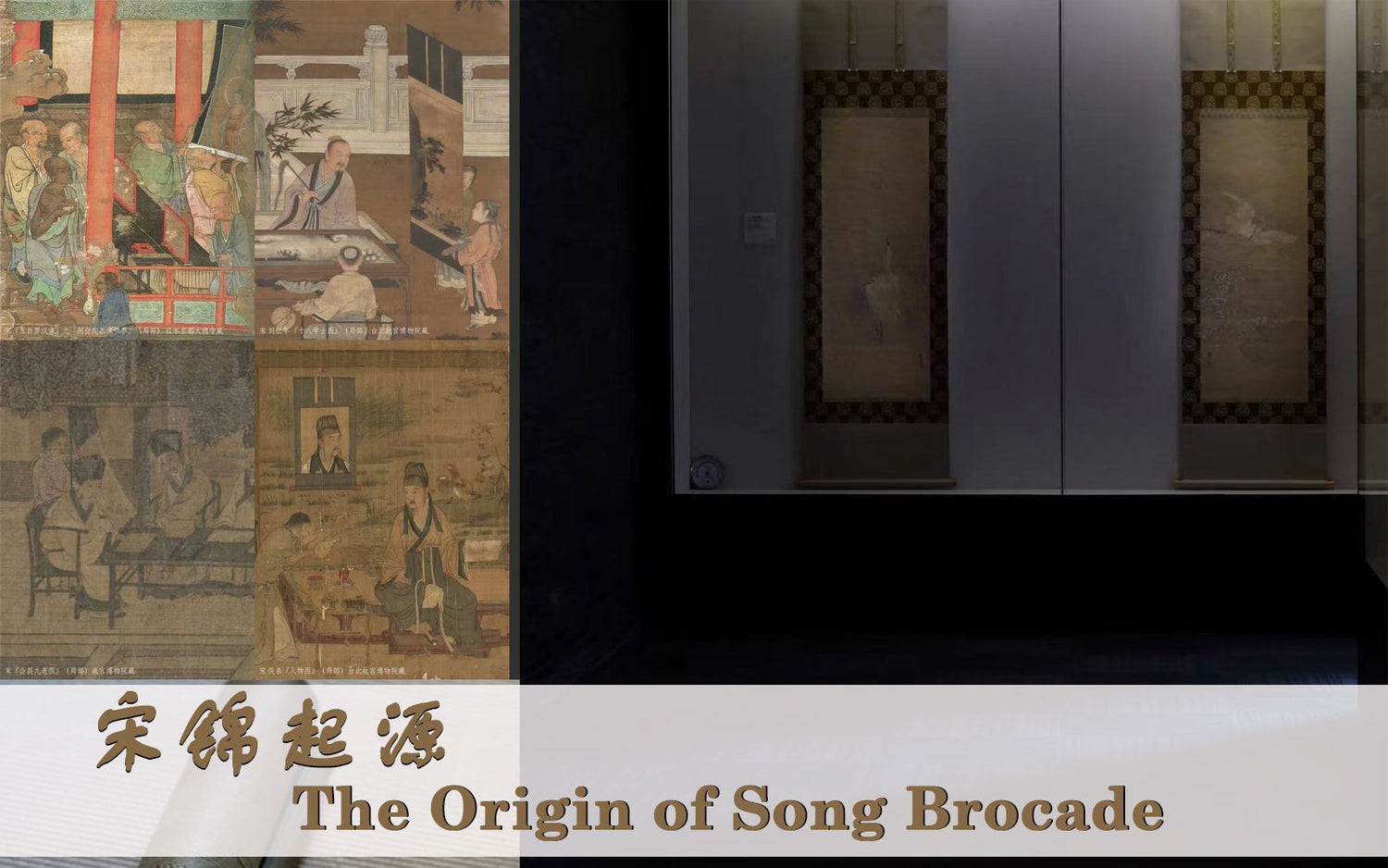
宋锦起源 The Origin of Song Brocade
An Inch of Song Brocade is Worth an Inch of Gold: Oriental Luxury Across Millennia
In an age obsessed with glitz and glamour, true luxury is never ostentatious. Hidden within the interwoven threads of silk, and woven through millennia of craftsmanship, it is an aesthetic that demands quiet contemplation. Today, let us delve into Song Brocade, hailed as the "Crown of Brocade," and explore how this intangible cultural heritage, stitch by stitch, creates the pinnacle of Oriental aesthetics.
Origin of the Song Dynasty: The perfect fusion of art and economy

The birth of Song brocade is inextricably linked to the Song Dynasty, an era hailed as the "Oriental Renaissance." At that time, society and the economy flourished, and culture and art reached unprecedented heights. The imperial court relocated south to Lin'an (present-day Hangzhou), where the exquisite craftsmanship of the north blended seamlessly with the gentle elegance of the Jiangnan region, giving rise to an aesthetic revolution.

The Song Dynasty marked the pinnacle of cultural, economic, and artistic development in Chinese history. Within a relatively stable social environment, the commodity economy flourished, the urban middle class emerged, and the pursuit of art and the aesthetics of life permeated every aspect of society. Simultaneously, the imperial court's relocation south to Lin'an (present-day Hangzhou) brought not only exquisite craftsmanship from the north, but also blended it with the inherently gentle and elegant culture of the Jiangnan region, giving rise to an unprecedented artistic style.
Song brocade emerged from this fertile soil. Initially used primarily for mounting calligraphy and paintings, the court and literati sought a brocade that would both protect precious paintings and calligraphy and complement them. It needed to be neither overshadowing the main subject nor exceedingly exquisite and rich in meaning. Therefore, a brocade with a simple and elegant style, soft and sturdy texture, and exquisite and subtle patterns became the first choice. This is the prototype of Song brocade. From the beginning, it has been imbued with the spirit of art and literati, which is its most fundamental difference from other famous brocades.

Song Brocade was originally created to accommodate paintings and calligraphy. Scholars and intellectuals sought a brocade that would both protect their precious scrolls and complement them beautifully. Thus, a brocade characterized by its simple elegance, soft texture, and exquisite patterns emerged. From its inception, Song Brocade has been imbued with the spirit of art and literati.
Crown of Splendor: Unveiling the Extraordinary Charm of Song Brocade
** "The ultimate craftsmanship of "every inch of brocade is worth its weight in gold."
Song brocade utilizes a unique "double warp and double weft" construction, requiring skilled craftsmen to work collaboratively on traditional wooden looms. The production process is extremely complex, especially the core "stitching and knotting" technique, which is equivalent to today's programming. The pattern must be "translated" into a readable language for the loom by connecting threads. A single mistake can ruin all the work. Two people operating a loom can only produce 10-12 centimeters a day. The time and labor required truly embody the meaning of "every inch of brocade is worth its weight in gold."
** Elegant and exquisite pattern aesthetics

Song brocade patterns are deeply influenced by the aesthetics of Song Dynasty literati, emulating nature while also imbued with rationality. Motifs are often based on geometric frameworks, such as the eight-point halo, linked rings, square chess pieces, and tortoise shells. Within this framework, natural flowers such as peonies, lotus flowers, plum blossoms, orchids, bamboo, and chrysanthemums, or auspicious animals and the Eight Immortals, are incorporated. This complex yet orderly structure is both complex and well-organized, brimming with variety and interest while maintaining overall harmony and elegance. It exudes a profound scholarly air and a sense of imperial splendor.
** Subdued and Reserved Cultural Character

China is known for four renowned brocades: Suzhou Song Brocade, Nanjing Yunjin, Sichuan Shujin, and Guangxi Zhuang Brocade.
Nanjing Yunjin features vibrant colors and strong contrasts, often bordered with gold flakes, creating a resplendent palette. Sichuan Shujin boasts elaborate patterns and harmonious warp and weft proportions. Guangxi Zhuangjin excels at geometric patterns, using red, green, black, and yellow as the primary colors. Its vibrant colors are characterized by strong contrasts and bold, powerful lines. Songjin, on the other hand, boasts elegant patterns with an ancient charm and a lustrous hue. Compared to the opulence of Yunjin and the vibrant and unrestrained Shujin, Songjin's beauty is restrained and profound. Rather than focusing on immediate visual impact, it emphasizes close appreciation and reflection. Its harmonious colors are vibrant but not overpowering, complex but not chaotic, embodying the character of a Song Dynasty gentleman: reserved yet rich, understated yet luxurious. This deeply embedded cultural integrity is its highest level of charm.
Through the wheels of history, the value of Songjin remains undimmed. In 2006, due to its irreplaceable artistic and cultural value, Song Brocade weaving techniques were included in the first batch of national intangible cultural heritage lists. This is not only an honor, but also a heavy responsibility. It marks that this ancient craft, once in service to the royal family and scholars, has become a cultural treasure jointly protected by the entire nation. This "intangible cultural heritage" status opens the door to history, allowing us to understand, touch, and inherit this thousand-year-old splendor. However, the best way to pass on something is not to shelve it, but to allow it to be revitalized in the new era.
